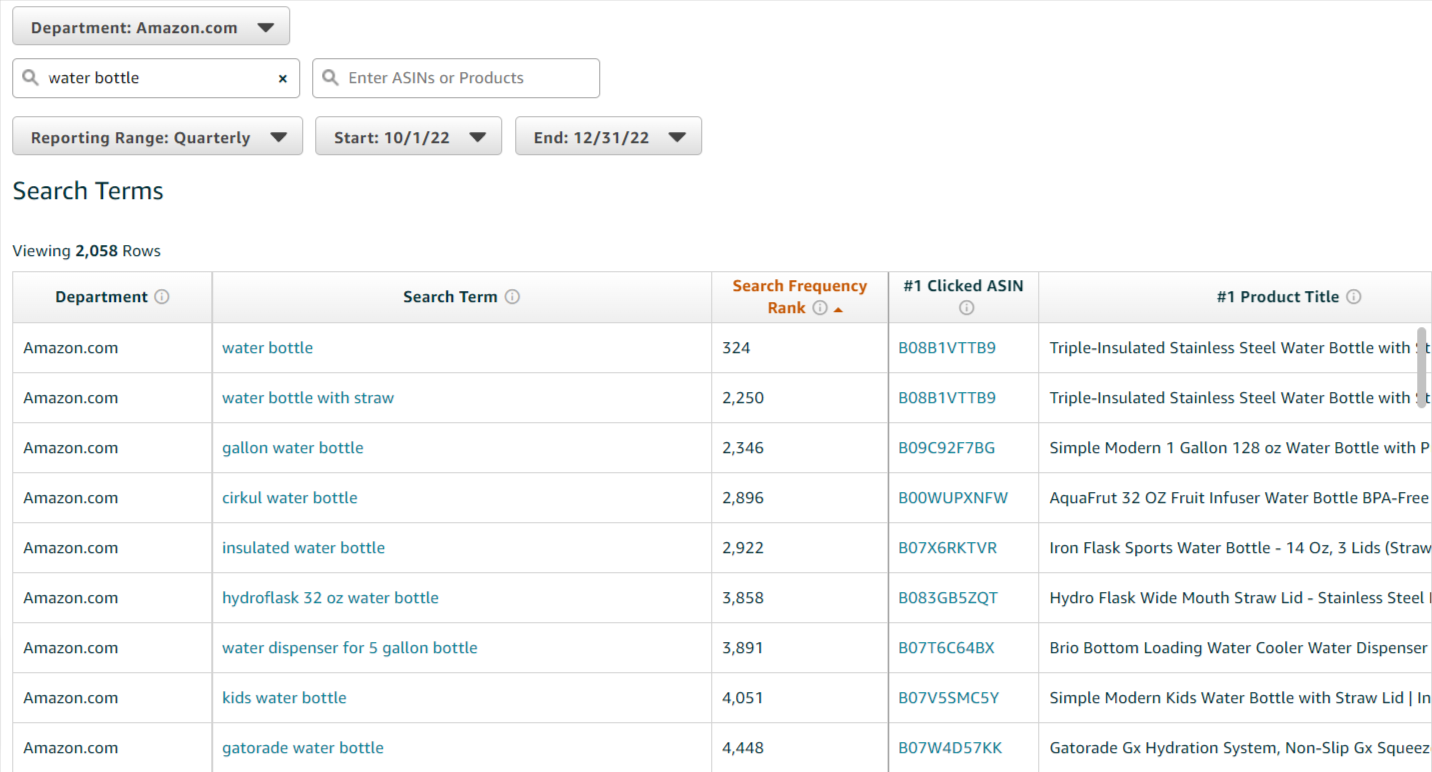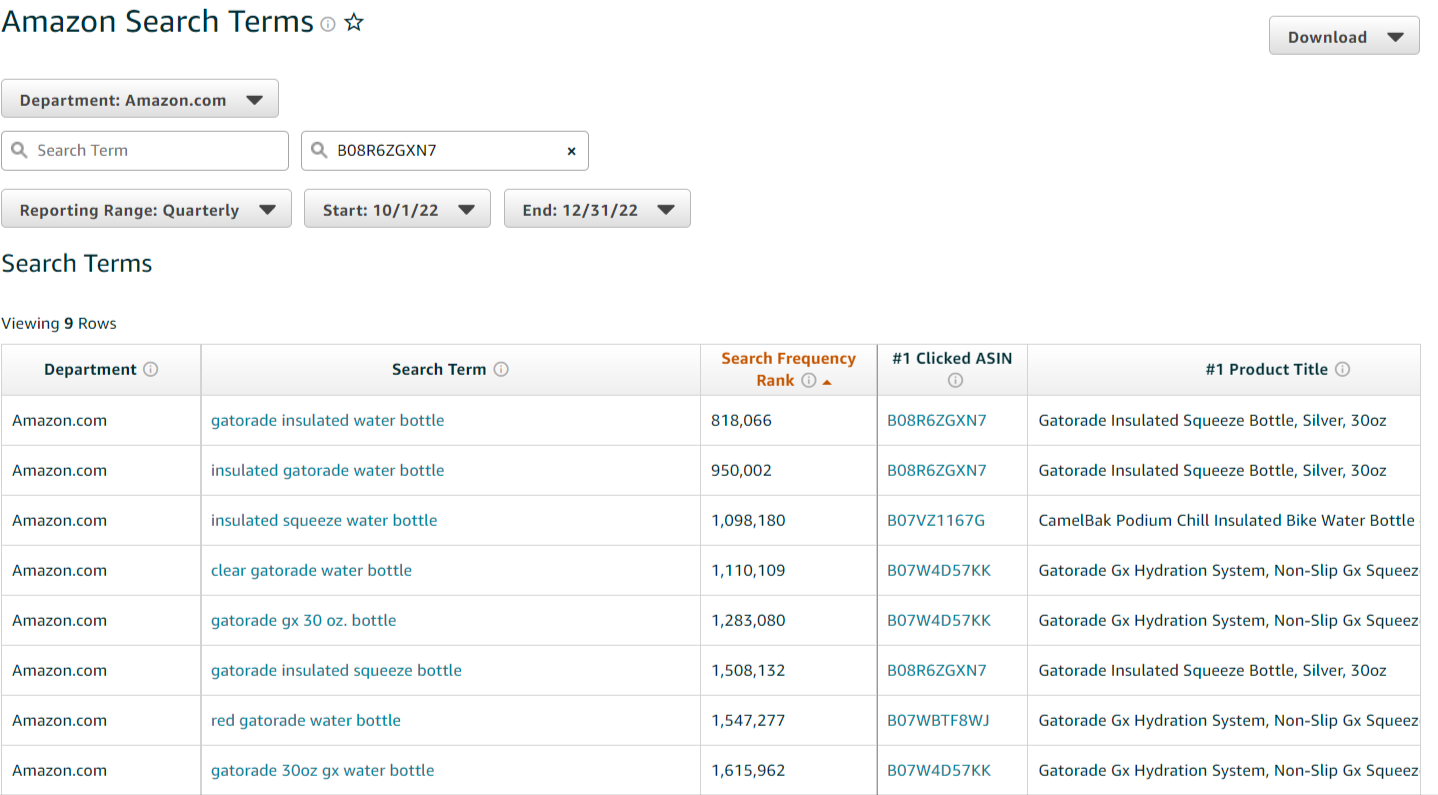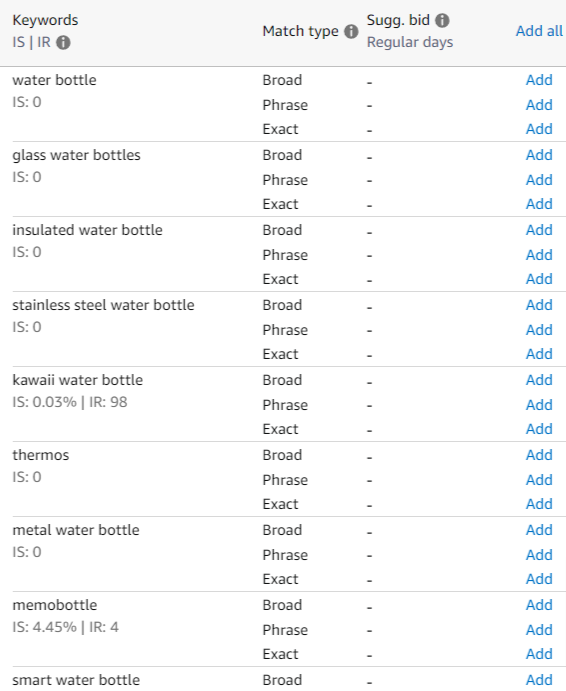Amazon Ads Keyword Strategy – A key to success for Amazon Ads is having a good keyword strategy.
With Sponsored Products and Sponsored Brands campaigns, keyword targeting is normally the first chance you have for potential customers either to click on your product detail pages or on your brand storefront.
Brainstorm Branded and Non-Branded Keywords
When I start working on a keyword strategy, I want to make sure I have a good understanding of the products that will be advertised as well as the landscape for that product category on Amazon.
I like to get an idea of some of the keywords that the competition is using on their product pages and on their storefronts. I then open a new spreadsheet and break it up into two sections. I do this to separate my non-branded keyword list from my branded keyword list.
Branded keywords are words related to your brand. In the example below, for water bottles, branded keywords could be “hydro flask” or “Gatorade water bottle.”

Non-branded keywords are more top of the funnel, such as just “water bottle” or “water bottle with a straw.” It is especially important to have a strong branded keyword list.
If people are searching specifically for your brand, you want to be set up for them to be able to find you. You don’t want a competitor to be stealing customers that were initially looking for your brand.
I then spend some time brainstorming, researching, and listing keywords for each group. These two lists will help you lay a strong groundwork for your Amazon ads keyword strategy.
When researching more keywords, there are a few tools that Amazon has to help fill out the rest of the list.
Brand Analytics Search Terms Tool
The tool that is normally the most helpful to me is the Brand Analytics Search Terms tool that you can find in Seller Central. You can type a search term into the search bar, which will give you the top-ranking search terms for that query, as well as the top three clicked-on products.
This tool will also give you the Search Frequency Rank for all of Amazon. The closer the Search Frequency Rank is to 1, the more popular a search is on Amazon.

I’ll stick with the water bottle example. As you can see, this list will bring in broad searches as well as searches for popular brands such as Hydroflask and Gatorade. There is also an option for you to change the date range if there is seasonality to the products you are advertising.
I like to change the reporting range to Quarterly to give me the most amount of data possible. You can scroll through the list to help think of some new keywords, and you can also download the list into a spreadsheet, which will make the longer lists easier to navigate.
Another great way to use this tool is by taking your ASINs (Amazon Standard Identification Numbers) and your competitor ASINs and searching them in the other search bar this tool provides. This will give you the search terms that are ranking high for that individual ASIN.
I used an ASIN for a Gatorade water bottle for the example below. You still get to see the search terms, their Search Frequency Rank, and the top three clicked-on products for each search term when you do this.

Amazon Ads Campaign Builder
In the campaign builder, there will be some suggested keywords that could help you fill out the rest of your list. If there is enough data available, you can also see the suggested bids, which could be important to know. Certain keywords might cost too much to be able to target and get a good return on investment.

After you enter what ASINs you want to target in the campaign manager, you will get the list of suggested keywords as well as their suggested bid from Amazon. You can easily click the Add button to target any of the keywords Amazon gives you.
Once you have your two lists in a good place, you can start working in the advertising console. I strongly recommend making different campaigns for branded and non-branded keywords. This will help you evaluate performance for each as well as stay organized.
Optimizing Amazon Amazon Ads Keyword Strategy: Evolving Keyword Strategies for Ongoing Success
Amazon also has automatic campaigns that you could run and see what search terms Amazon is pulling in from your product detail pages.
Even when campaigns are launched, your job isn’t done yet. I like to think that my keyword lists are always evolving.
This works in two ways. When I’m monitoring performance, if I’ve given a keyword an ample amount of time and it isn’t performing well, I will pause that keyword and take it out of my keyword lists for future use.
I also like to go back to the Brand Analytics Tool as well as the campaign manager to see if there are new search terms that are ranking well that I am not targeting. Once campaigns are running, you can download a search term report in the Measurement & Reporting tab.
Through the broad match type, there could be some search terms that are performing well for you but aren’t specifically being targeted. You can add them to the keyword lists and then add them to the campaigns to be able to better monitor the performance and adjust bids accordingly.
A strong keyword strategy is always evolving and adjusting to the marketplace. For that to work, you have to monitor performance and make constant adjustments.
With a solid keyword foundation, your ad strategy with Amazon Ads is off to a strong start. Putting in the time and research before launching campaigns is what allows our ads to have a strong launch, meet our clients’ goals, and set future campaigns up for success.
Author and Creator by Dean Masalta
You don’t have to do it alone. We have a full-service Amazon growth team that can help you take advantage
of everything the retail giant offers its sellers.
